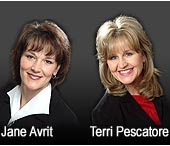Mckinney, TX: Profiler by The Pescatore Avrit Team

McKinney
The annual Artistic Krewe of Barkus parade in downtown McKinney is a canine-oriented Mardi Gras celebration which includes prizes for pet costumes and float designs, as well as servings of jambalaya and king cake.
McKinney, 30 miles north of Dallas, boasts gently rolling hills, tree-lined neighborhoods and a historic downtown. City leaders estimate the population at around 112,000, more than double the number counted in the 2000 Census, making McKinney one of the fastest-growing cities in the U.S.
The original Collin County Courthouse – now the McKinney Performing Arts Center – stands at the center of McKinney's downtown square. Collin County Regional Airport, at the convergence of U.S. 75 and State Highways 121 and 380, is emerging as a regional corporate airport.
With its slogan "Unique by Nature," the city has supported a "green" initiative, encouraging local businesses to build environmentally friendly facilities. Pat Lobb Toyota of McKinney, the nation's first LEED-certified automobile dealership, joined Wal-Mart's "McKinney Experiment" as high-profile, environmentally friendly businesses operating in McKinney.
McKinney was named for Collin McKinney, signer of the Texas Declaration of Independence. The town is the county seat of Collin County, also named for Mr. McKinney.
On March 24, 1849, William Davis, who owned 3,000 acres where McKinney now stands, donated 120 acres for the town site. Ten years later McKinney was incorporated, and in 1913 the town adopted the commission form of government.
For the first 125 years of its history, McKinney served as the principal commercial center for the county, providing farmers with flour, corn and cotton mills, cotton gins, a cotton compress and cottonseed oil mill, as well as banks, churches, schools, newspapers and, since the 1880s, an opera house.
Farmers and manufacturers were able to ship their goods on the Houston and Texas Central Railway, which reached McKinney in 1872, and, beginning in 1881, on the Missouri, Kansas and Texas Railroad. From 1908 to 1948 the Texas Electric Railroad, running from Denison to Dallas and Waco, served McKinney.
By 1953 McKinney had a population of more than 10,000 and 355 businesses. The town continued to serve as an agribusiness center for the county until the late 1960s, but by the mid-1980s, the town had become a residential area for commuters working in Plano and Dallas.
“The area has this heart that had been preserved,” said Mr. Halderman. “It reminded me of the little town in Ohio where my dad grew up.”
McKinney has a small-town feel, he says, yet offers proximity to “big-city amenities” such as shopping and culture. The couple moved from Los Angeles in 2000. Lori Halderman, an obstetrician, has established a busy practice at McKinney Medical Center; Mr. Halderman works from home as a freelance video producer. The Haldermans have two children, ages 6 and 4, and consider McKinney a good place to raise kids.
“You see rolling hills here,” said Mr. Halderman. “I almost feel like I’m in Vermont.”
McKinney residents face a hefty commute into Dallas, which is 30 miles south. But many residents work in McKinney — home to Blockbuster, Raytheon and other big employers — or at one of the many corporations headquartered in nearby Plano.
“McKinney is a place where first-time buyers can get in,” said Mr. Harden, who estimates the general new-home price range at $100,000 to $2 million. Small, fixer-upper homes can still be priced as low as $50,000 in parts of McKinney.
That kind of story wouldn’t surprise Mr. Harden, who says, “McKinney is just a very friendly, down-home place.”
Labels: growth, McKinney, neighborhood profiles, pescatore avrit team, real estate, trends, TX



